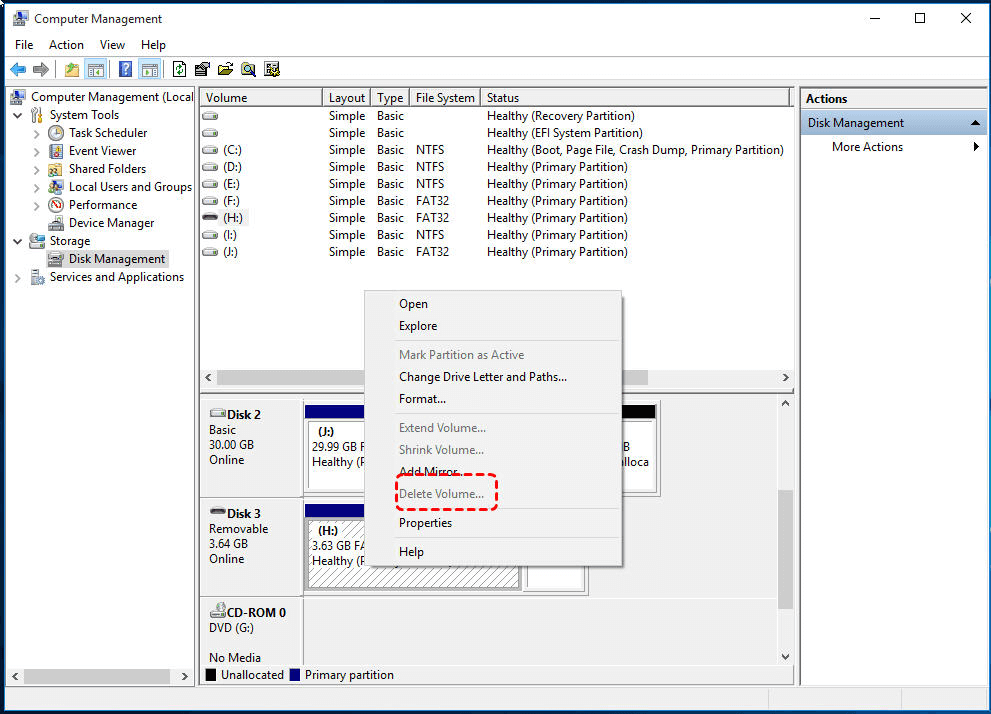
- WINDOWS 10 FORMAT USB DRIVE COMBINE VOLUMES WINDOWS 8
- WINDOWS 10 FORMAT USB DRIVE COMBINE VOLUMES WINDOWS
WINDOWS 10 FORMAT USB DRIVE COMBINE VOLUMES WINDOWS
The “Optimize drive usage” option is new in Windows 10. If you didn’t select this option while adding a drive, you can click “Optimize drive usage” afterwards. Select the “Optimize drive usage to spread existing data across all drives” option to have Windows intelligently rearrange the data. To add drives to an existing storage space, click “Add drives” and choose the drives you want to add. After upgrading the pool, you’ll be able to remove drives from pools and optimize drive usage.
WINDOWS 10 FORMAT USB DRIVE COMBINE VOLUMES WINDOWS 8
The upgraded storage pool will only be compatible with Windows 10, and Windows 8 won’t be able to use it anymore. If you originally created a storage pool with Windows 8, you’ll see an “Upgrade pool” link you can click to take advantage of the new features in Windows 10. To rename a storage space, change its drive letter, or specify a different size, click “Change” to the right of the space. To rename a storage pool, click “Rename pool” under that storage pool. You’re only limited by how many physical drives you have available. You can create as many separate storage spaces as you like.

To create a new storage space, click “Create a storage space”. For example, you can even enable BitLocker drive encryption for it.Īfter creating a storage space, you can head back to the Storage Spaces pane in the Control Panel to manage it. You can do anything you’d do with a normal drive with the storage space. It appears no different from a normal, physical drive to Windows and the desktop programs you use. The storage space you created will appear as a standard drive under This PC, with the name and drive letter you configured. When the physical storage fills up, you can plug in another drive and take advantage of it with no additional configuration required.Ĭlick “Create storage space” when you’re done configuring your storage space. This interface allows you to create pools of storage larger than the amount of physical storage space you have available. The interface will show you the maximum available amount of storage you have, which will vary depending on the type of space you create. You’ll also need to choose the size of your storage space here. Select “Parity” to be protected from a single drive failure and have more space, but remember that a parity space is noticeably slower than the other options here. Select “Two-way mirror” to store two copies of your data across the drives or select “Three-way mirror” to store three copies of your data across the drives. Select “Simple (no resiliency)” for a large pool of storage that provides no protection from drive failure. You can also just search for “Storage Spaces” in your Start menu. Then, head to Control Panel > System and Security > Storage Spaces. First, connect the drives you want to group together to your computer. You can create a Storage Space from the Control Panel. If you choose to format a mirror or parity space with the Windows Resilient File System (ReFS), Windows will automatically monitor and maintain file integrity to prevent file corruption. This solution is ideal for data archival, and not data you use frequently. However, parity spaces are slower than simple and mirror spaces. You’ll have more space and you’ll be protected if a single drive fails. Windows will keep a single copy of your data along with parity information.

This is ideal for protecting important data from hardware failure.

A single drive-or more than one drive, depending on how you configure things-can fail and you won’t lose any data.



 0 kommentar(er)
0 kommentar(er)
